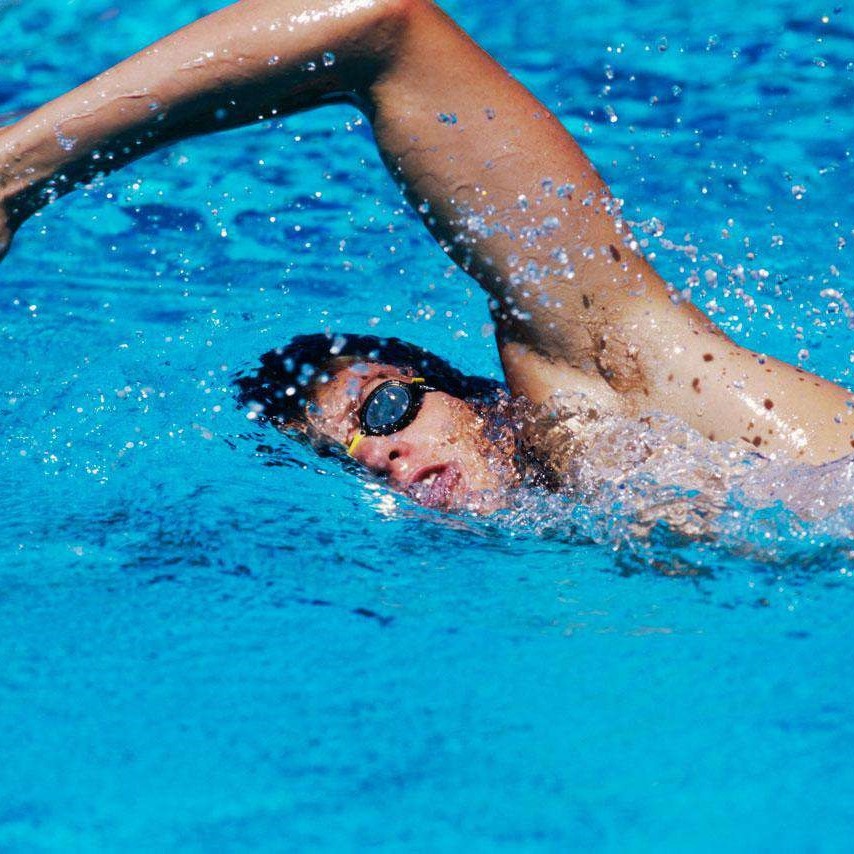Front crawl swimming is the fastest and most efficient stroke used in competitive and recreational swimming. Known for its smooth, rhythmic motion, it allows swimmers to cover long distances with minimal resistance. Most athletes use front crawl swimming during freestyle events because of its speed and endurance benefits. The stroke combines alternating arm movements, flutter kicks, and timed breathing to create a continuous forward drive. As a result, it’s a top choice for triathletes, fitness swimmers, and beginners alike.
Moreover, mastering front crawl swimming improves overall water confidence and physical conditioning. It engages major muscle groups including shoulders, core, back, and legs. This leads to better cardiovascular health and muscular endurance over time. Because of its widespread use, learning proper technique is essential for safety, efficiency, and performance. With consistent practice and attention to form, anyone can develop a strong and sustainable front crawl.
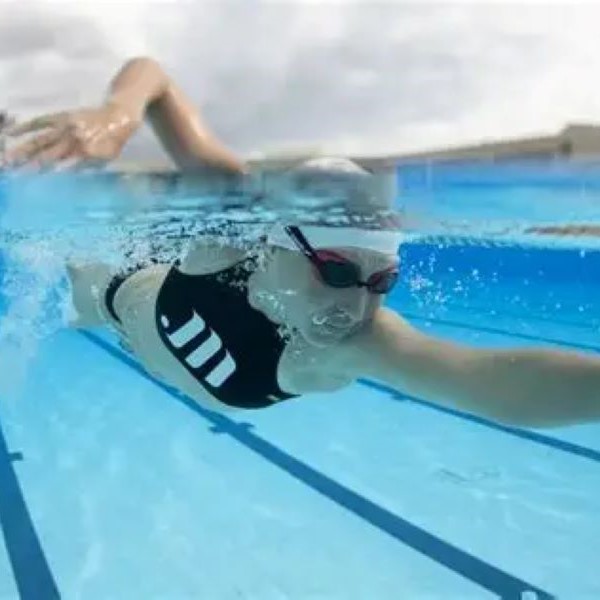 Why Front Crawl Swimming Is the Preferred Stroke for Speed
Why Front Crawl Swimming Is the Preferred Stroke for Speed
Front crawl swimming stands out as the fastest swimming technique available. Its streamlined body position reduces drag in the water. Swimmers lie flat on their stomachs with faces down, rotating slightly with each breath. This alignment cuts through the water more easily than other strokes. In addition, the alternating arm pull generates constant propulsion. There is no pause between strokes, which keeps momentum steady.
The flutter kick also contributes to speed. Fast, small kicks from the hips maintain balance and lift the legs. This prevents sinking and keeps the body horizontal. Unlike breaststroke or butterfly, front crawl swimming uses less energy per meter traveled. As a result, swimmers conserve strength over long distances.
Competitive races often end with narrow margins. Even slight improvements in technique can lead to faster times. That’s why elite athletes spend hours refining every part of their front crawl. Therefore, choosing this stroke gives swimmers a clear advantage in both speed and efficiency.
Streamlined Body Position Reduces Resistance
One key to fast front crawl swimming is maintaining a horizontal, streamlined shape. The body should float close to the surface with minimal up-and-down movement. Any unnecessary motion increases drag and slows progress. To achieve this, swimmers keep their head in line with the spine. Looking down or lifting too high creates resistance.
Core engagement plays a big role in stability. Tight abs and lower back muscles prevent the hips from dropping. When the legs sink, drag increases significantly. A strong core keeps everything aligned.
Hand entry into the water must be smooth. Fingers should enter first, followed by the hand and forearm. Slapping the surface causes splash and wasted energy. Instead, a clean, quiet entry supports forward motion.
Body rotation enhances reach and power. Swimmers turn their shoulders and hips together with each arm stroke. This allows longer pulls and better leverage. Hence, combining alignment with controlled movement maximizes efficiency in front crawl swimming.
How Breathing Technique Impacts Front Crawl Performance
Breathing is one of the most challenging parts of front crawl swimming. Poor timing can disrupt rhythm and cause fatigue. The correct method involves turning the head to the side during the arm recovery phase. One goggle stays in the water while the mouth clears the surface. This minimizes body tilt and maintains balance.
Inhale quickly through the mouth. Then exhale slowly underwater through the nose and mouth. Continuous exhalation prevents breath-holding, which leads to tension. Over time, this pattern becomes natural and automatic.
Bilateral breathing—taking breaths on both sides—is highly recommended. It promotes symmetrical stroke mechanics and better body alignment. Most swimmers start on one side but gradually train to alternate every three strokes.
Holding your breath creates air buildup and discomfort. It also raises heart rate unnecessarily. By practicing rhythmic breathing, swimmers stay relaxed and focused. Therefore, mastering breath control is essential for sustained front crawl swimming.
Common Breathing Mistakes and How to Fix Them
Many swimmers struggle with breathing during front crawl swimming. One common error is lifting the head too high. This breaks the streamline and sinks the legs. Instead, rotate the head with the shoulder, not upward.
Another issue is breathing every two strokes on the same side. This creates an uneven stroke pattern. It can lead to muscle imbalances over time. Switching to every three strokes helps correct this.
Some hold their breath until they need air. This causes panic and shortens swim sets. Practice exhaling steadily underwater to avoid this. Try humming or counting bubbles to build awareness.
Delayed breathing is another problem. Waiting too long to turn the head leads to gasping. Plan your breath early in the stroke cycle. Sync it with the recovering arm.
Using a snorkel during drills can help. It removes the breathing variable so you focus on form. Once comfortable, reintroduce side breathing. These fixes lead to smoother, more efficient front crawl swimming.
Arm Movement and Pull Mechanics
The arm action drives most of the forward motion in front crawl swimming. Each arm follows a repeating cycle: catch, pull, push, and recovery. First, the hand enters the water fingertips first, just past the head. Then it extends forward into the catch phase. This is where propulsion begins.
Next, the pull moves the hand and forearm backward in an S-shaped path. High-elbow technique keeps the forearm vertical. This maximizes water pressure and thrust. Avoid dropping the elbow—it reduces power.
The push continues toward the hip. Here, the hand accelerates to generate final force. After exiting the water, the arm recovers forward above the surface. Relax the shoulder and keep the elbow high.
Both arms work alternately. While one pulls underwater, the other recovers. This overlap ensures non-stop movement. Practicing with paddles can strengthen the pull. However, use them carefully to avoid shoulder strain. Hence, precise arm mechanics are vital for effective front crawl swimming.
Kick Technique and Leg Drive for Forward Momentum
The flutter kick supports balance and propulsion in front crawl swimming. It starts from the hips, not the knees. Small, fast movements transfer energy down the legs. Feet stay relaxed and pointed, creating subtle turbulence.
Knees bend slightly on the upkick and downkick. But the motion remains compact. Wide or deep kicks waste energy and increase drag. Keep kicks within 18 inches of the surface.
The kick also stabilizes body rotation. It counters the twist created by arm strokes. Without it, the body wobbles side to side. This slows progress and tires the swimmer faster.
Practicing with a kickboard isolates leg strength. Focus on keeping the face in the water and core tight. Add fins occasionally to build ankle flexibility and kick speed.
Even though the arms do most of the work, the kick is still essential. It maintains rhythm and posture. Therefore, developing a strong, consistent flutter kick improves overall front crawl swimming performance.
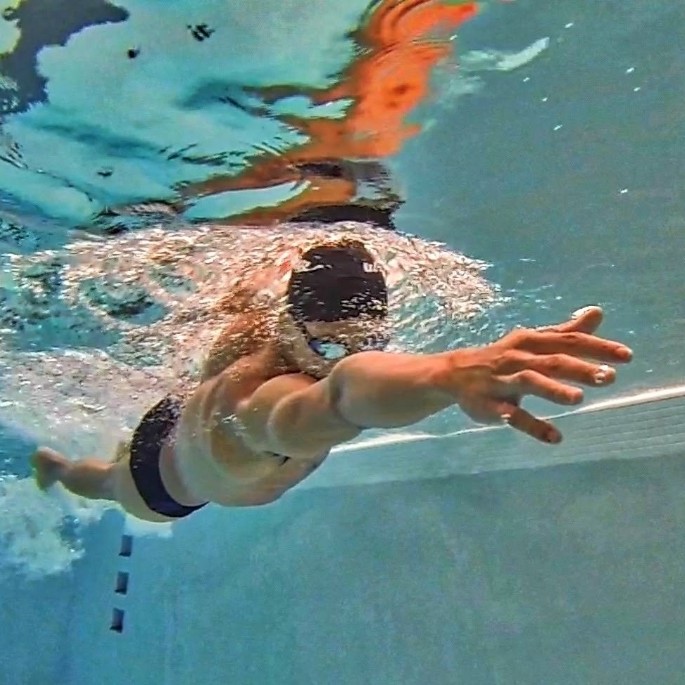 Drills to Improve Front Crawl Swimming Efficiency
Drills to Improve Front Crawl Swimming Efficiency
Drills help swimmers isolate and correct specific parts of front crawl swimming. One popular drill is catch-up stroke. Bring one arm forward and wait for the other to “catch up” before pulling. This builds timing and coordination.
Finger drag drill focuses on high elbows. Swimmers drag their fingertips across the surface during recovery. This reinforces proper arm positioning. It also increases stroke awareness.
Kick-on-side drill improves balance and rotation. Swimmers float on their side with one arm extended. They kick while breathing to the ceiling. This mimics the body position during actual swimming.
Single-arm front crawl lets you focus on one side at a time. Use a pull buoy and swim with one arm only. Alternate sides after each length. This helps fix asymmetries.
Using tools like snorkels, paddles, and buoys enhances these drills. They remove distractions and allow deeper focus. Regular drill practice leads to lasting improvements in technique.
Using Equipment to Enhance Skill Development
Swimming aids support skill growth in front crawl swimming. A pull buoy placed between the thighs lifts the legs. This lets swimmers focus on arm technique without worrying about kicking.
Fins increase kick speed and ankle mobility. They also promote better body position. Short-blade fins are best for technique work.
Paddles add resistance to the pull phase. This builds upper-body strength and water feel. Start small and limit use to avoid shoulder injury.
Snorkels eliminate breathing challenges. Swimmers can work on stroke mechanics without turning their heads. This is useful during long sets or video analysis.
Amp meters or pace clocks track lap times. They help swimmers monitor progress and maintain consistency. Combining tools with drills leads to faster mastery of front crawl swimming.
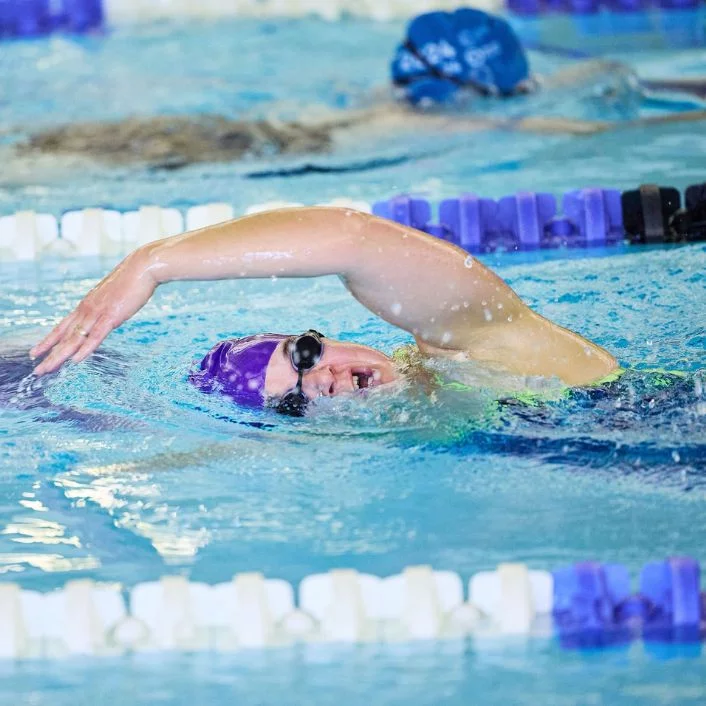 Frequently Asked Questions
Frequently Asked Questions
Is front crawl the same as freestyle? Yes, in competition, freestyle means any stroke, but most choose front crawl.
How can I swim front crawl longer without tiring? Build endurance with interval training and proper breathing.
Why do my legs sink during front crawl? Weak core or poor body position. Practice with a pull buoy.
Should I breathe every two or three strokes? Beginners start every two; advanced swimmers use every three for balance.
Can I learn front crawl as an adult? Absolutely. Many adults master it with regular lessons and practice.
What’s the best way to increase speed? Focus on technique first, then add strength and sprint training.
Do I need equipment to improve? Not required, but tools like fins and paddles help accelerate learning.
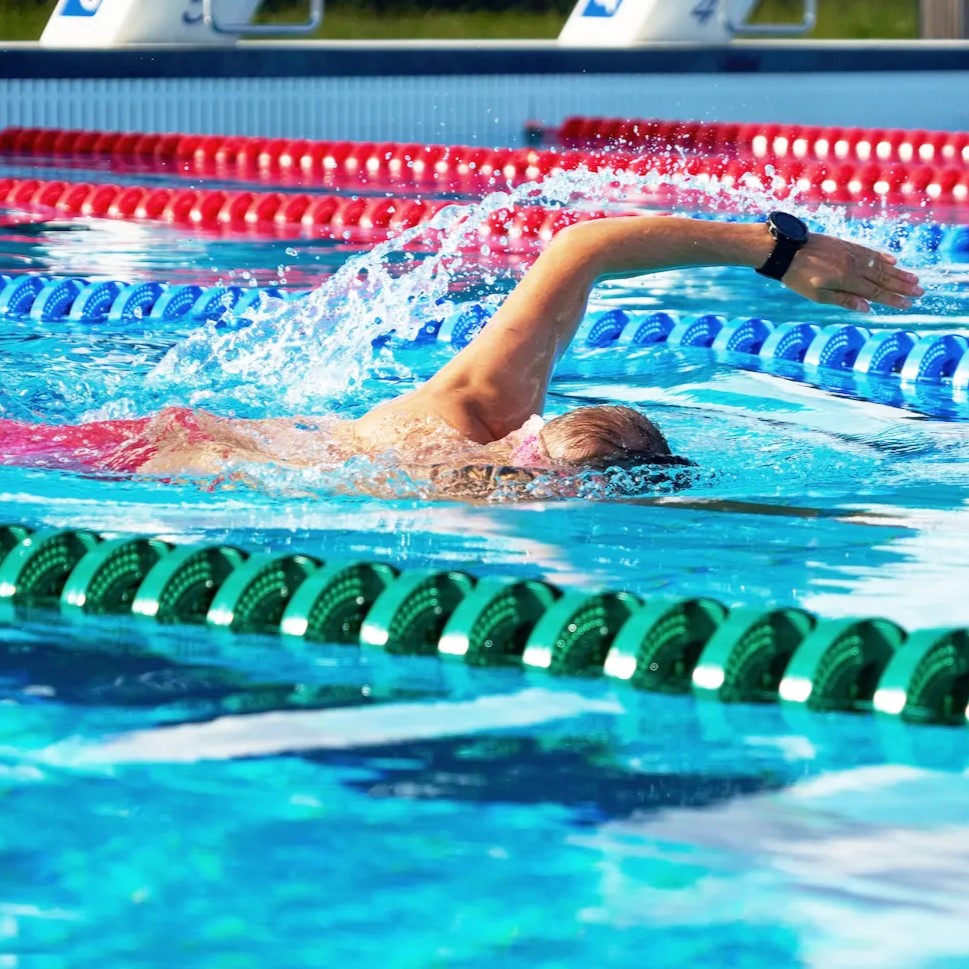 Final Thoughts
Final Thoughts
Front crawl swimming is a foundational skill that offers speed, endurance, and fitness benefits. Whether you’re training for a race or swimming for health, mastering this stroke makes a big difference. It requires attention to body position, breathing, arm pull, and kick mechanics. With consistent practice, these elements become second nature.
Moreover, using drills and equipment speeds up improvement. Addressing common mistakes builds confidence and efficiency. As technique improves, so does enjoyment in the water. Therefore, investing time in learning proper front crawl swimming pays off in performance and long-term aquatic ability.
